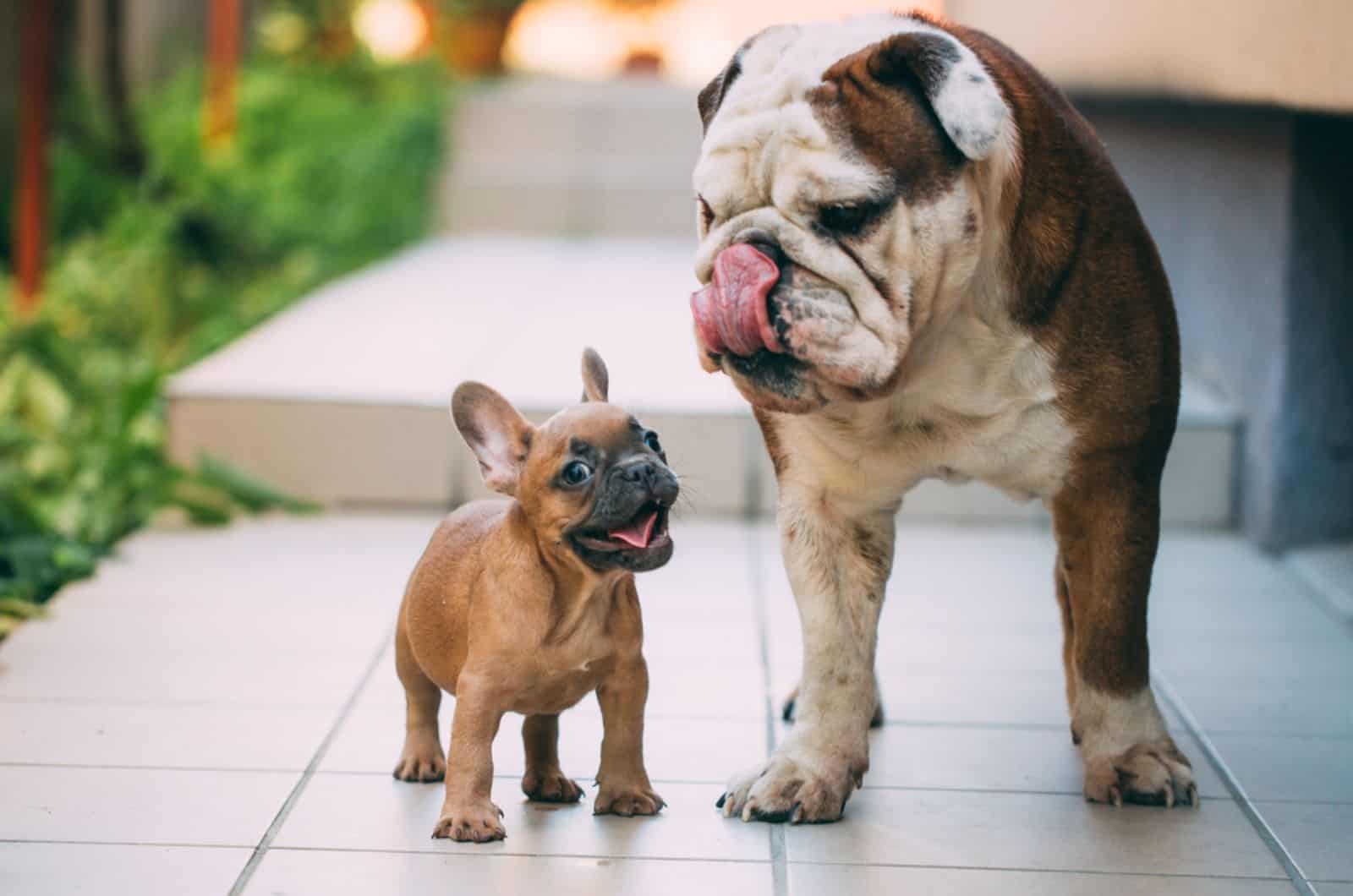The distinctive wrinkles, charming, compressed “sour mug” features, and cuddly, stocky form of Bulldog breeds makes them instantly recognizable. They have a certain appearance, demeanor, and temperament that might not suit all novice or experienced dog owners.
Adopting a puppy from one of the many bulldog breeds out there, however, is undoubtedly a canine match made in heaven if you follow a number of French or American bulldog profiles for their complete cuteness.
Even so, choosing the right bulldog for your family can be a difficult and emotional process that takes time and consideration. That’s why we’ve compiled a list of some of the cutest, most devoted, and family-friendly bulldog breeds.
The history of the bulldog, one of the most popular canine breeds, dates back to the Middle Ages. Bulldogs were bred back then for their ferocity – a quality essential for their use in bloody sports and in battle.
Bulldog breeds, including the English, French, and plenty of others, make wonderful family pets that are devoted to their owner. Despite being outgoing, self-assured, and vivacious, they make great security dogs.
Bulldogs need a lot of love and attention despite the fact that they may appear strong and self-assured. Before visiting a reputable adoption website to choose your new cuddle friend, become acquainted with the following breeds of bulldogs if you are thinking about adopting one.
1. English Bulldog
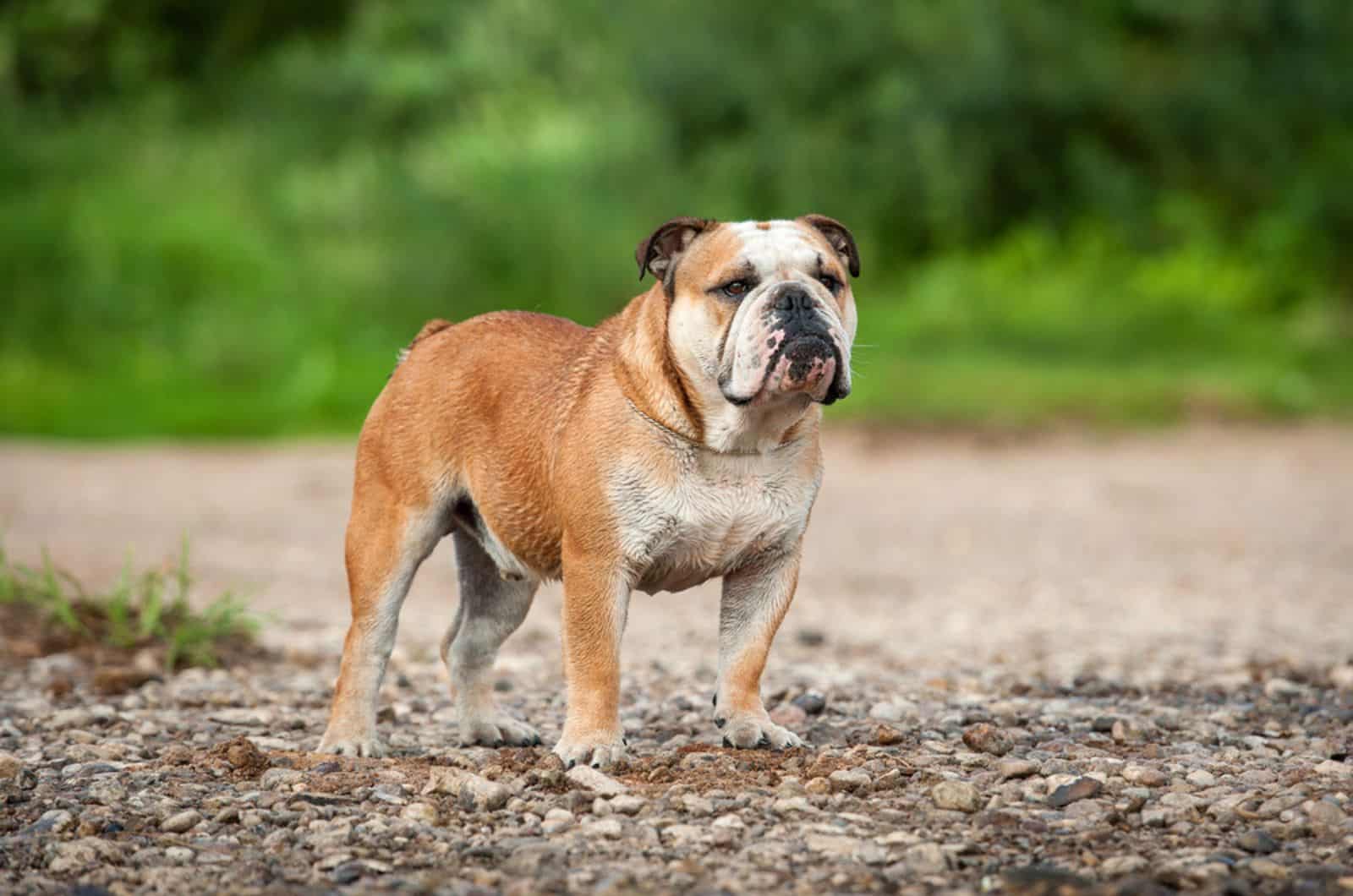
The English Bulldog was the beginning of it all. According to historical records, England is where these dogs initially appeared in the 13th century. Some of them were guard dogs back then. They were principally employed, though, in the blood sport known as bull-baiting.
English Bulldogs, once vicious, courageous, and tenacious dogs, were forced into a fight with an enraged bull. Bulldogs actually acquired their name from this. Bulldogs would torment and subdue the animal right in front of the crowd with their powerful teeth.
It was a very repulsive sport, but thankfully it is outlawed everywhere now. English Bulldogs don’t seem to be the same breed of dog they used to be. There were still a lot of Bulldogs in the country after the prohibition, and breeders then began to breed for personality.
Families in England fell in love with the English Bulldog because of its softer temperament. As a result, the breed attracted interest on a global scale, and finally left the country, where it progressively evolved into all the Bulldog subtypes we know today.
They are loving dogs that adore their owner and want to be with them all the time. Children, in particular, are a huge favorite of theirs. Depending on their gender, English Bulldogs weigh roughly 50 pounds, and they need only light exercise.
Personality Of The English Bulldog
The contemporary English Bulldog is one of the sweetest and most gentle dog breeds. Despite how they appear, English Bulldogs are no longer violent. Instead, these dogs are a little silly, and they have a warm place for family members.
Due to their specific fondness for children, they make wonderful companions for young children at home. They are not only robust enough to withstand the physical play of children, but they are also gregarious, and like being the primary focus around younger children.
It’s crucial to remember that because of their genetic makeup, English Bulldogs are more susceptible to breathing problems, as well as cardiac and other health concerns. Therefore, if you acquire an English Bulldog, be sure to keep up with its medical checkups.
English Bulldogs from the past still exhibit their bravery. Having said that, these Bulldogs are indeed a fantastic additional set of eyes for your children. However, before putting your trust in these dogs, we advise parental supervision, socialization, and training.
2. American Bulldog
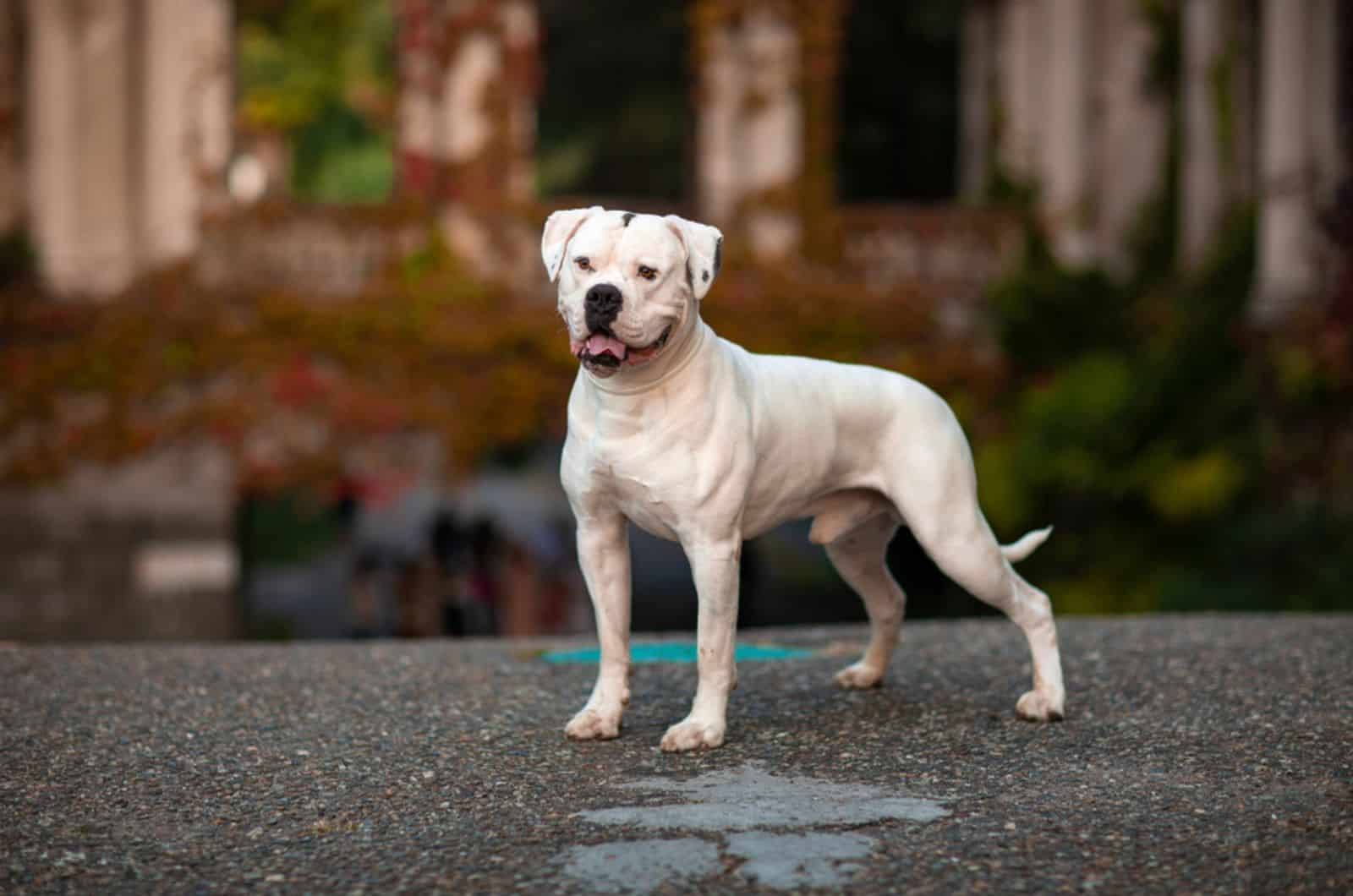
Bulldogs initially appeared in the United States of America during the early 19th century. Nonetheless, according to historians, they have lived in the nation ever since the 17th century. The breed was eventually improved in order to have characteristics that are better suited for farm work.
These versatile working breeds did some herding, wild pig catching, and livestock guarding. Because of their agreeable temperaments, the shift went smoothly, and it was a huge success.
The American Bulldog gained popularity as a ranch work dog for its capacity to capture stray animals and pigs. In actuality, ranchers and farmers found it to be a beneficial tool.
The breed was on the verge of going extinct during World Wars I and II. With only three living dogs, John D. Johnson, as well as Alan Scott, revived the breed.
The athletic, well-balanced dog possesses remarkable power, quickness, friendliness, and stamina. The American Bulldog’s torsos and shoulders are its most powerful areas; it is stocky and well-built.
It has a short, silky, and colorful coat that requires little upkeep. The American Bulldog’s nose and eye rims are lightly pigmented. It’s commonly known that the dog drools, but it is social, self-assured, and alive… fantastic for individuals, couples, and families.
Personality Of The American Bulldog
The characteristics you’d expect in a companion dog are all present in American Bulldogs. They are the most loyal dogs there are, constantly having your back no matter what. They have a tremendous amount of confidence, and they aren’t hesitant to stand up for their owner.
American Bulldogs are strong and brave workers, but they are kind and placid at home. If they are properly socialized and taught, they can be terrific playmates for older kids. However, their obstinacy might make training challenging.
They are often crossed with other dog breeds to create amazing hybrids that inherit some of their incredible personalities.
The American Bulldog might require a strong and reliable pack leader, but their powerful personalities will probably need to be restrained. They will, however, make the ideal dog if given a caring environment and enough exercise.
3. Victorian Bulldog
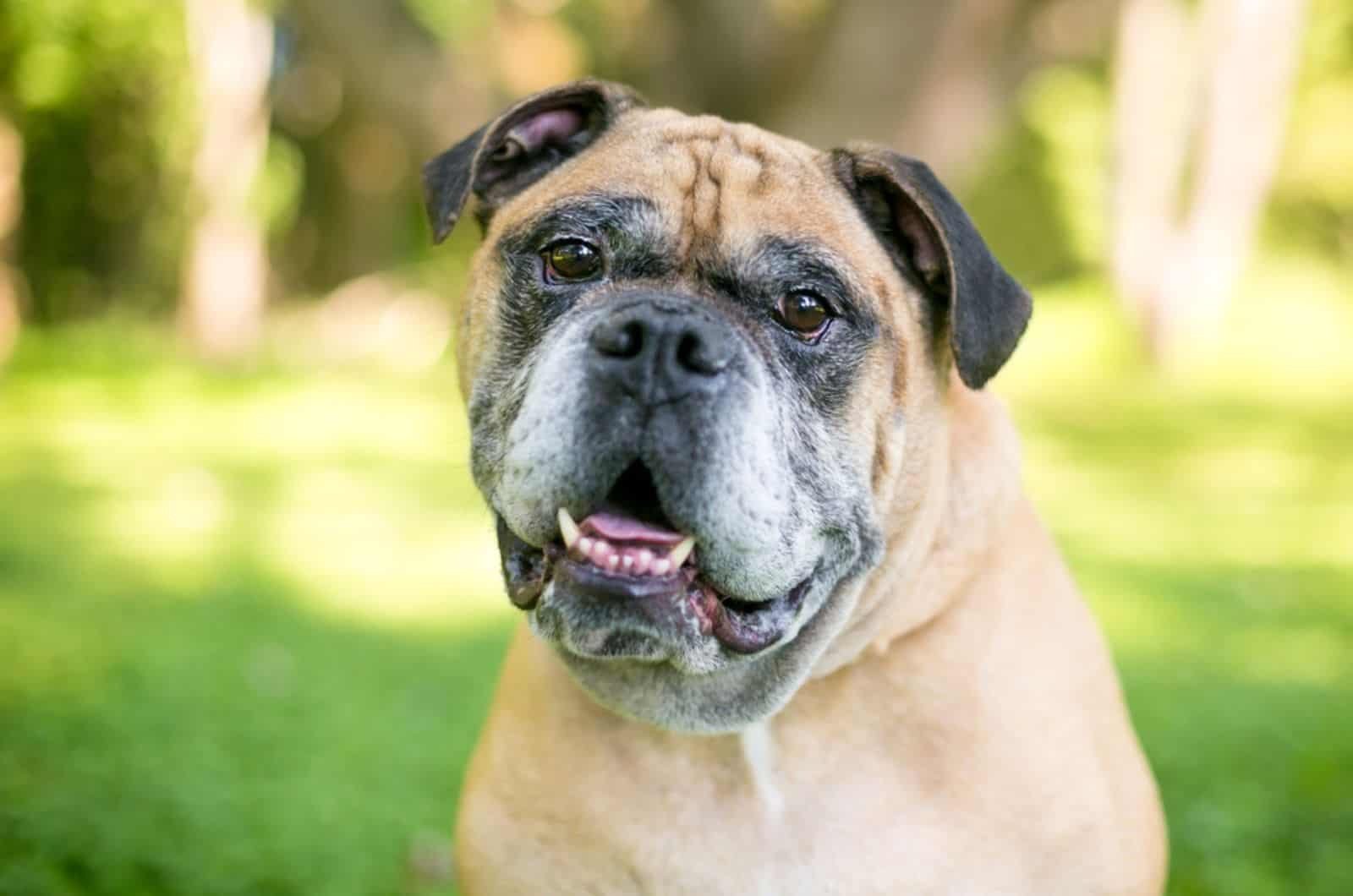
In the 1980s, Ken Mollett was primarily credited with creating the amiable bully dog, known as the Victorian Bulldog. These dogs have a lengthy history that stretches back to the Victorian times. Mollett sought to revive these Bullies from this renowned age as a result of this.
He mixed English Bulldogs with Staffordshire Bull Terriers, Bullmastiffs, and Bull Terriers in general. He not only produced a Bulldog breed that resembled the old Victorian dogs, but also one that was considerably healthier.
Victorian Bulldogs are not as widely spread as the ordinary bulldog breed since they are significantly taller. Throughout many brachycephalic breeds, including the typical bully, respiratory issues are a concern.
However, they have fewer breathing issues. Additionally, their corkscrew tail is less evident now.
Victorian Bulldog Personality
Few dog breeds are as dependable and trustworthy as the Victorian Bulldog. They all value loyalty, and it becomes clear once they become a part of your family. They are happy canines that cherish their time spent with family members.
They share personality features with other Bulldog breeds, such as being fiercely devoted and protective while also being extremely kind and loving.
Because they may experience separation anxiety, Victorian Bulldogs need a significant amount of attention, but because they aren’t highly active dogs, just cuddling up to them at bedtime will suffice to provide comfort.
The Victorian Bulldog is what we like to refer to as the ideal and perfect family pet. They not only get along well with children, but also with other household pets. However, as they have a tendency to assume leadership roles, they will need to undergo suitable training.
The Victorian is a protective dog, just like most Bulldogs. However, this does not imply that they are hostile. There isn’t an ounce of aggression in these dogs toward the folks they know. They will, however, be wary and distant among strangers.
4. Olde English Bulldogge
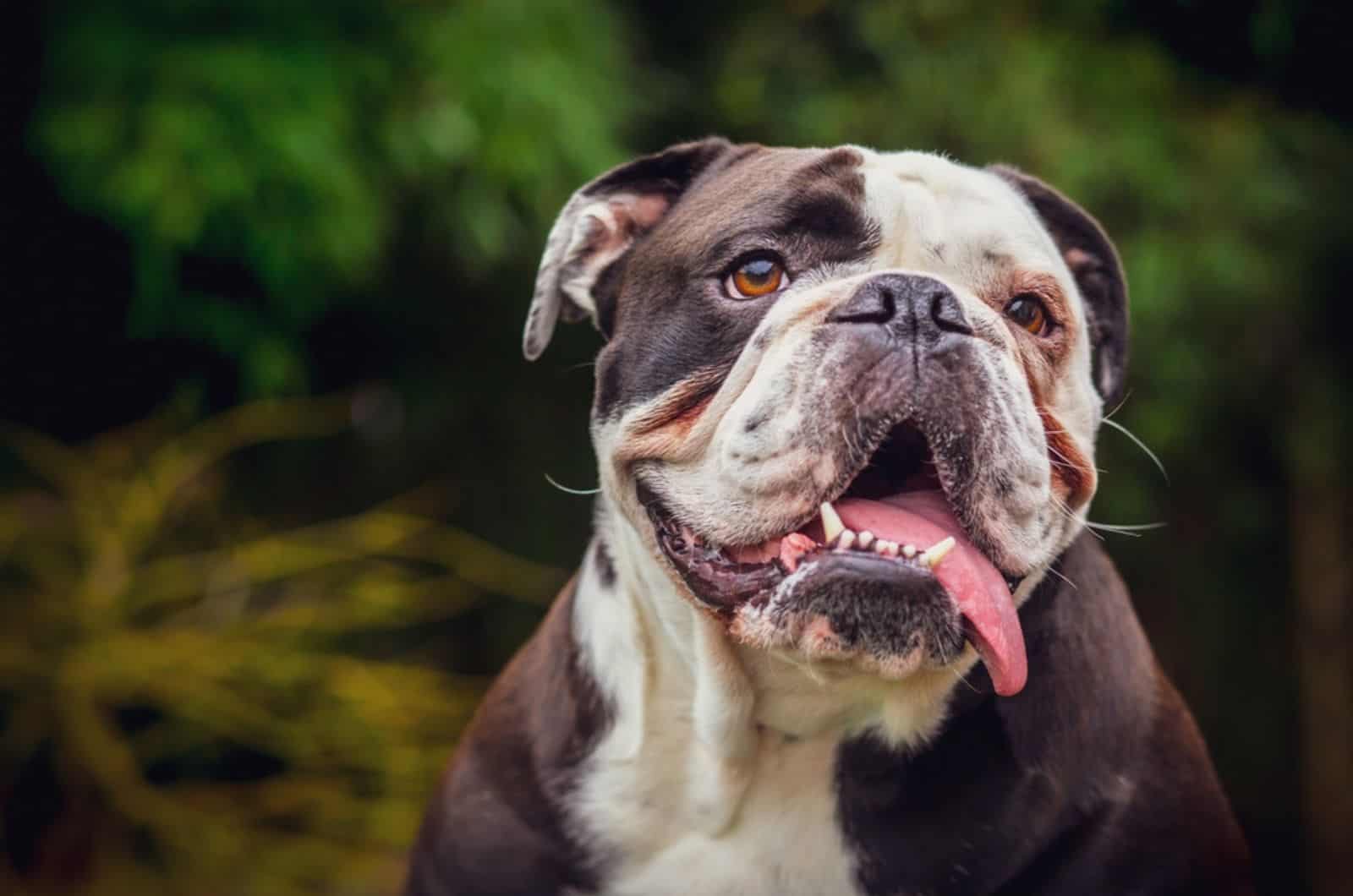
The Olde English Bulldogge was originally created in the 1970s by David Leavitt, with the intention of paying homage to the Bulldog of the eighteenth century. Leavitt desired a bulldog that was athletic, attractive, and healthy like the older bulldogs.
Leavitt started breeding many kinds of bulldog breeds, including the English Bulldog with the American Pit Bull Terrier, the Bullmastiff, and the American Bulldog.
The end product was an athletic bulldog breed with all the physical characteristics of the earlier bull-baiting dogs, and an amiable disposition.
Leavitt referred to his dogs as “Leavitt Bulldogs” to set his line apart from others despite the fact that “bulldogges” was a common spelling error. However, the UKC gave these dogs their official designation of Olde English Bulldogges when it recognized them in 2014.
Olde English Bulldogge Personality
You can possibly already infer the temperament of the Olde English Bulldogge from its diverse parentage. Bulldogs are courageous, self-assured, and proud canines. But, they nevertheless had the same level of sociability as contemporary bulldogs within the home.
They rank among the best guard dogs among bulldog breeds since they are very protective of the family. Being brave canines, they would attack any stranger that tried to approach the owner’s territory without giving up.
Bulldogges are extremely spirited and enthusiastic dogs, as Leavitt intended. If their excess energy isn’t put to use through employment or exercise, it will become a problem. A destructive Bulldogge is the last thing you need if you have a domineering personality.
5. Australian Bulldog
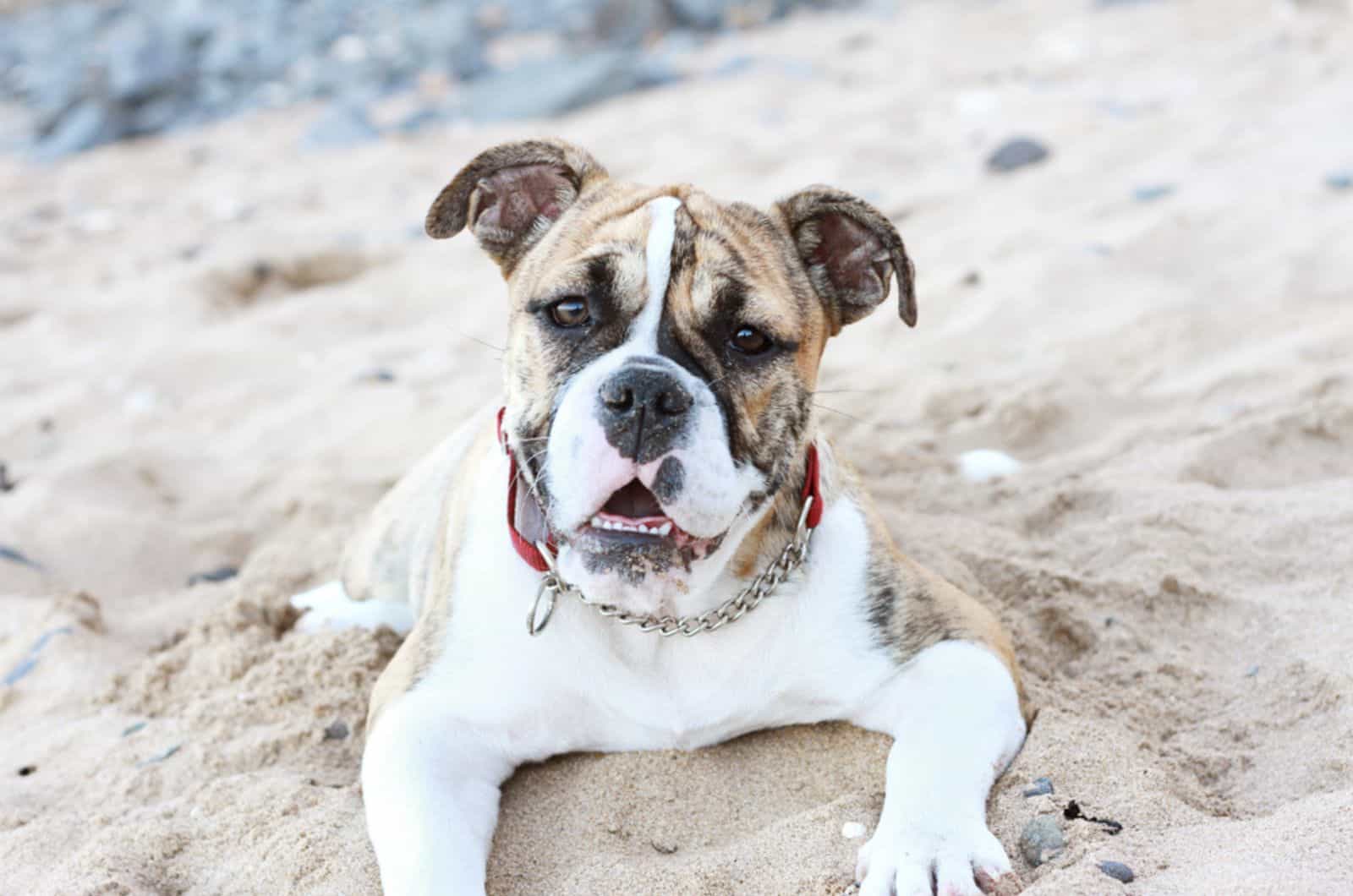
The Australian Bulldog shares some characteristics with its English cousin, but there are also clear similarities from other breeds, such as the Boxer. As implied by the name, this breed of bulldog evolved in Australia’s Outback in the late 1990s.
The breeder’s objective was to create a bulldog that was practical and better suited to life in the harsh Australian Outback.
Naturally, the English Bulldog was the primary breed selected for this bulldog. The Australian Bully had larger limbs and much less wrinkly spots.
Australian Bulldog Personality
Like other bulldog breeds, the Australian Bulldog is a kind and caring dog that was developed to do well in family settings. They are not only incredibly loyal dogs, but they are also highly intelligent, which makes training them simpler.
They are a wonderful fit because they were created for the Australian way of life. You can anticipate a relaxed dog that is adaptable to different lifestyles in the house. These adaptive dogs will thrive anywhere, including on your rural farm.
The Australian Bulldog still has to be physically active. They were developed to be more athletic than their English counterparts, after all. However, you don’t really need much to maintain this dog. Their need for affection and attention is the most crucial factor.
6. Catahoula Bulldog
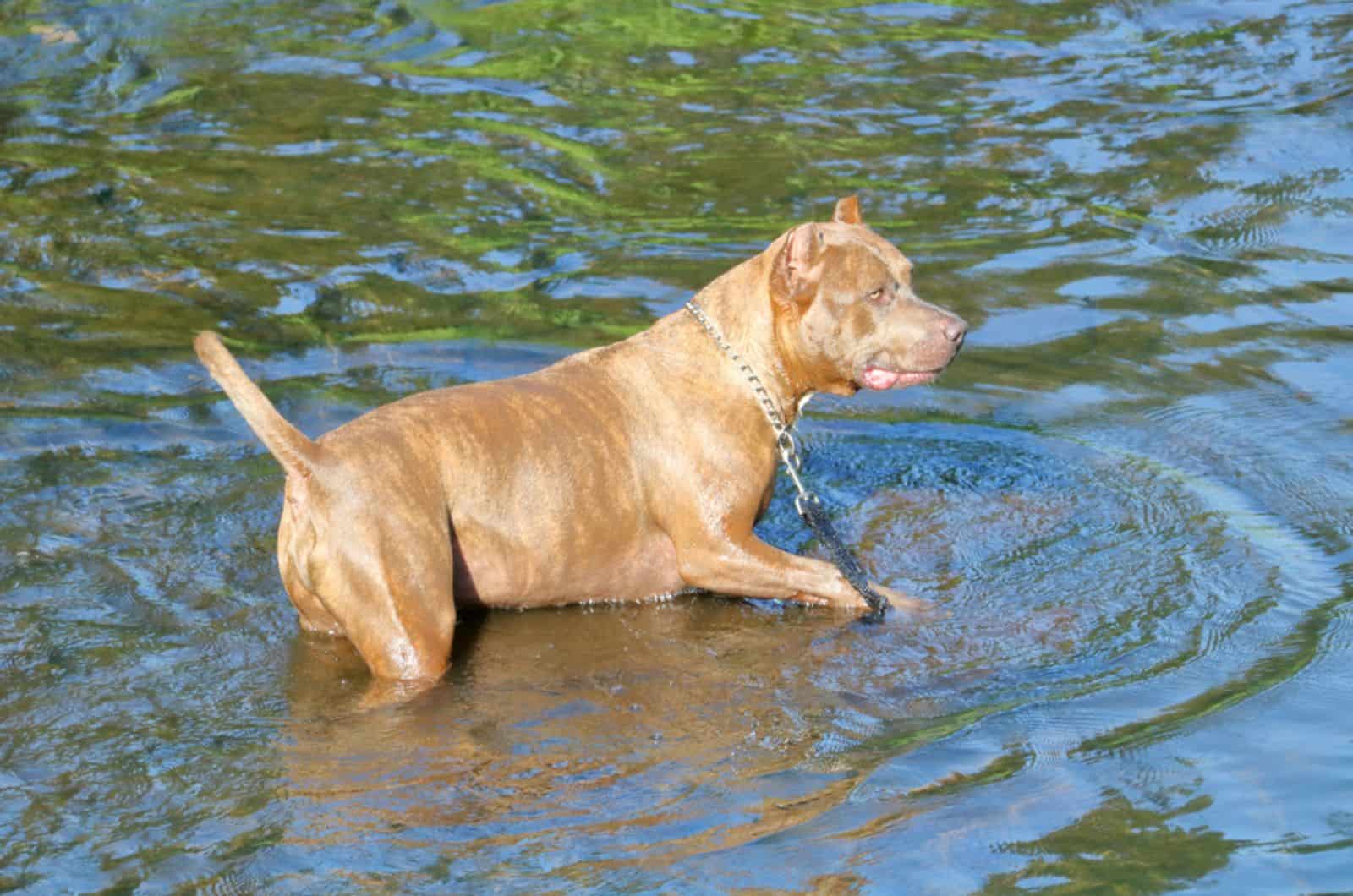
The Catahoula Bulldog is a cross between an American Bulldog and a Catahoula Leopard Dog, also known as the American Mastahoula. It has been in existence for more than a century, notwithstanding the fact that it is a hybrid breed.
Louisiana is where Catahoula Leopard Dogs first appeared. As a result, this breed of bulldog has gained popularity in America’s southern states. These bulldogs were created for popular regional jobs like big game hunting and herding livestock.
Catahoula Bulldogs are now well-known. Furthermore, they are more well-known than you might imagine, even though few individuals have heard of them.
Sadly, there are currently many bulldog breeds in shelters throughout the southern states. That is the place to look if you want one.
Read more about the Catahoula growth chart.
Catahoula Bulldog Personality
This bulldog will be lively and active because of its Catahoula Leopard Dog ancestry. To keep them from acquiring negative traits, you’ll need to frequently exercise them. Furthermore, they won’t be as easy to govern without it.
However, Catahoula Bulldogs have the usual Bulldog protective instincts, and they are extremely devoted animals. They don’t get along with strangers, so use caution when inviting new guests into your home. They will, however, eventually become used to them.
Nevertheless, they have a very warm relationship with family members. Although they usually get along better in families with older children, supervision is still strongly advised.
Although they are not naturally hostile, they could accidently hurt a smaller child because they are big.
7. Alapaha Blue-Blood Bulldog
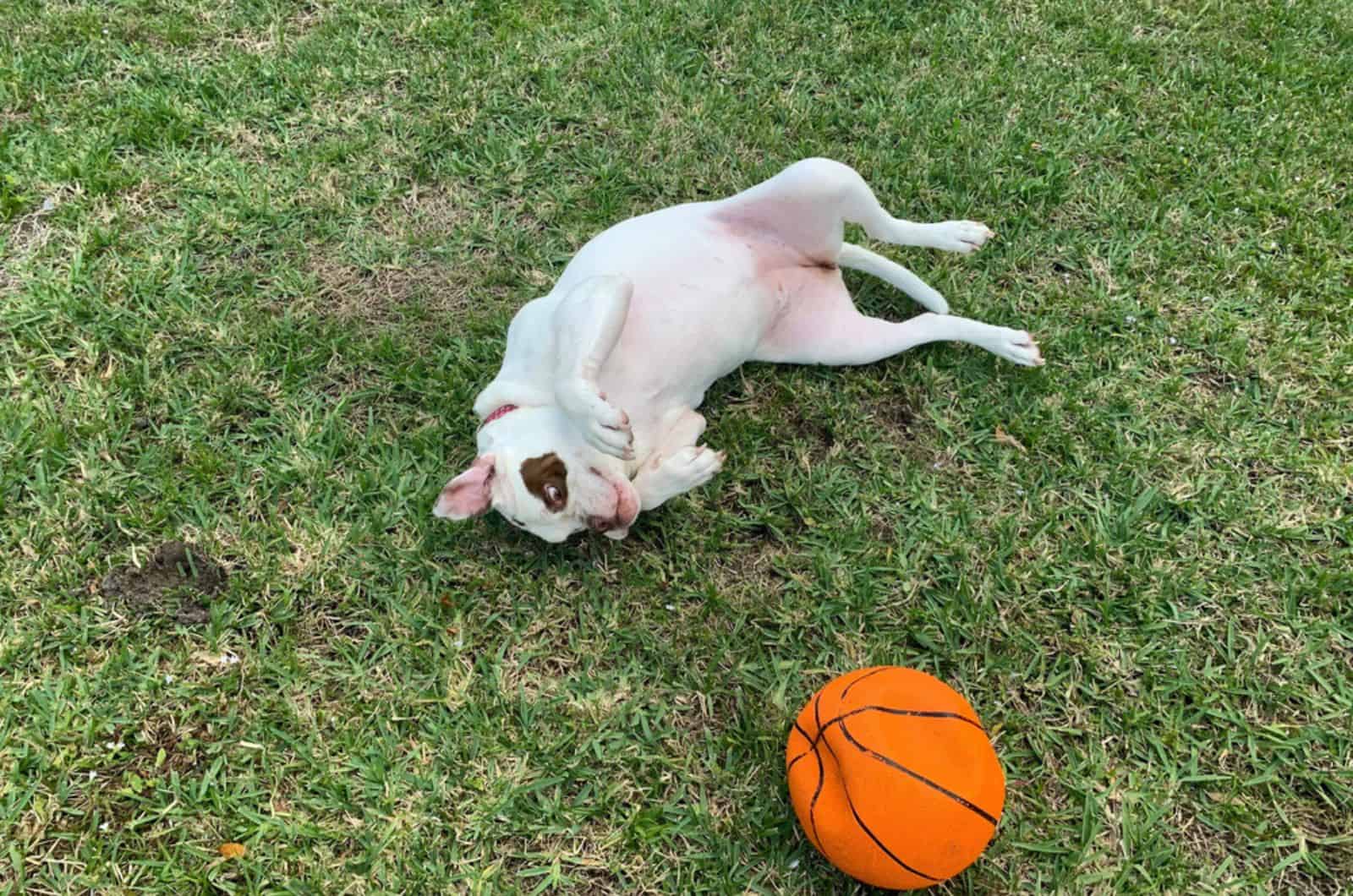
It’s a myth that the Alapaha Blue-Blood Bulldog has blue blood. However, it would be absolutely amazing. The reason why they are referred to as “blue-blood” dogs is because the initial breeder thought they represented a noble breed.
The blue-blood Bulldog was created by the breeder, Papa Buck Lane. He began by numerous generations of breeding his beloved dog, Otto (all of them named Otto). Buck Lane’s granddaughter carried on the custom after his death.
The Alapaha is physically superior to the English Bulldogs. They were also raised with great work ethics. Alapaha Blue-Blood Bulldogs were used as livestock dogs, hunting dogs, and watchdogs in the southern parts of the U.S.
Alapaha Blue-Blood Bulldog Personality Traits
The Alapaha Bulldog is an honorable and diligent bulldog. They pay close attention to detail, and their high level of intelligence makes them effective workers. Alapaha Bulldogs, however, are excellent watchdogs and defenders of the field.
They have strong territorial tendencies, which sometimes make them a little too possessive. They love their family, but are wary of any outsider who comes onto the farm. They actually take their responsibilities as family members more seriously than other dogs do.
They work best in households with just one dog, while they enjoy playing with the older kids in the group. If they are familiar with children, Alapaha Bulldogs are remarkably forgiving, and can tolerate their rough play. They make wonderful family pets in general.
8. Alano Espanol
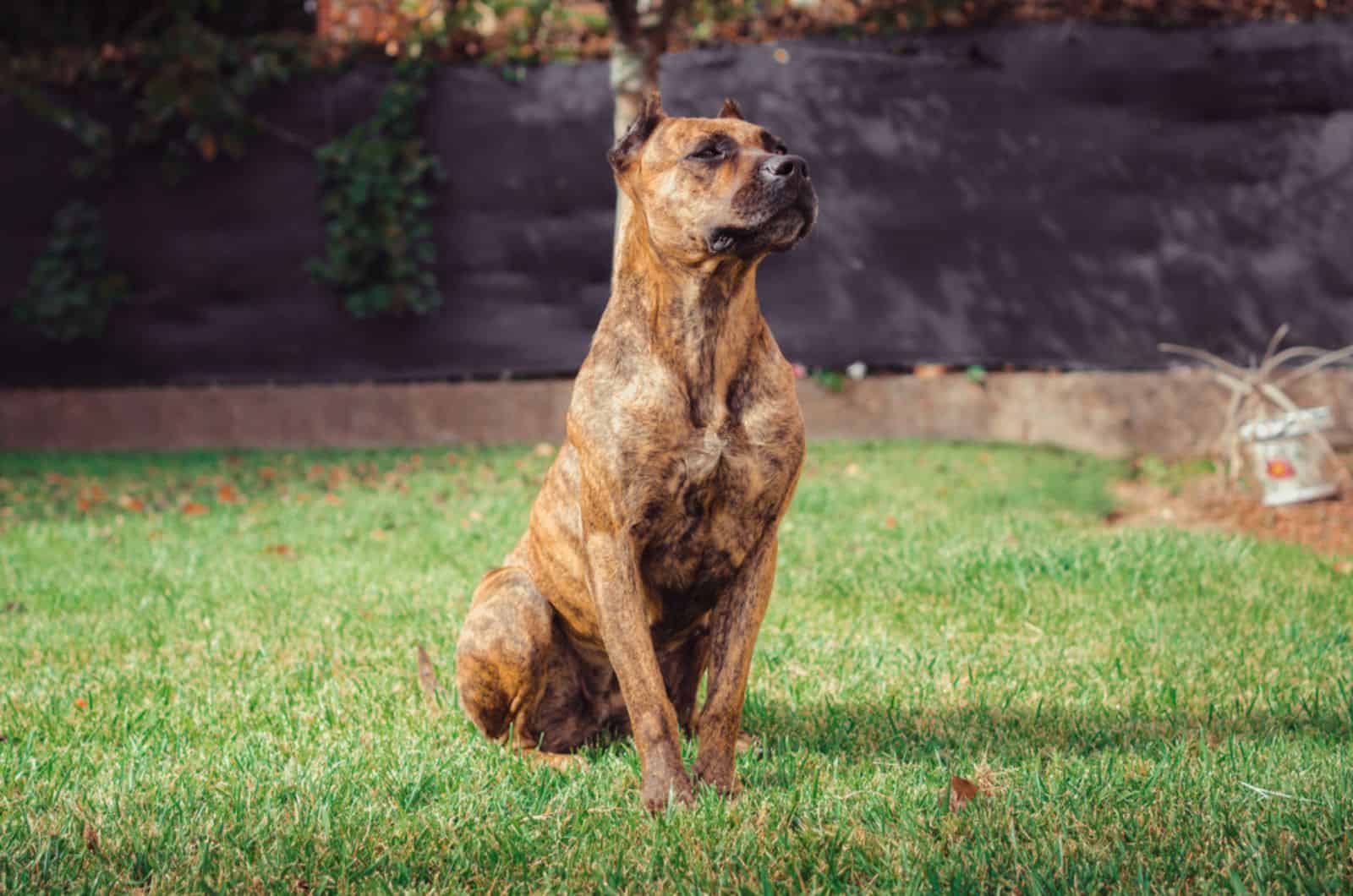
Like the Ca de Bou, the Alano Espanol is also known as the Spanish Bulldog, and it is a native of Spain. They were developed as catch dogs, hunting partners, and watchdogs. They were also used in Spanish blood sports in the old days as bull-baiting canines.
Dogs known as Alano Espanol are thought to have originated from the Alani tribe of Iran. During the fifth century, they moved to Spain as a nomadic tribe. As a result, they took these canines with them when they set off for the West.
The Spanish Bulldog quickly gained popularity and became very sought-after in Spain. The Alano Espanols were quickly adopted by Spanish explorers. Additionally, while native Indians were being subjugated, Alanos were trained as combat dogs.
Alano Espanol Personality Traits
The Spanish Bulldog has become a very gregarious and extroverted dog. They behave similarly to other canines and animals in their pack as well as around people. As a result, the Spanish Bulldogs still have a pack mentality.
Another plus: The Alano Espanol is a low maintenance dog breed.
These canines require socialization and training due to their enormous size. They aren’t at all violent, although when around people, they can become a little raucous.
Spanish Bulldogs are very energetic worker canines that serve a variety of purposes, even more so than the other breeds of bulldogs on this list. They will need consistent regular training and activity throughout their entire life in order to stay fit and happy.
9. Continental Bulldog
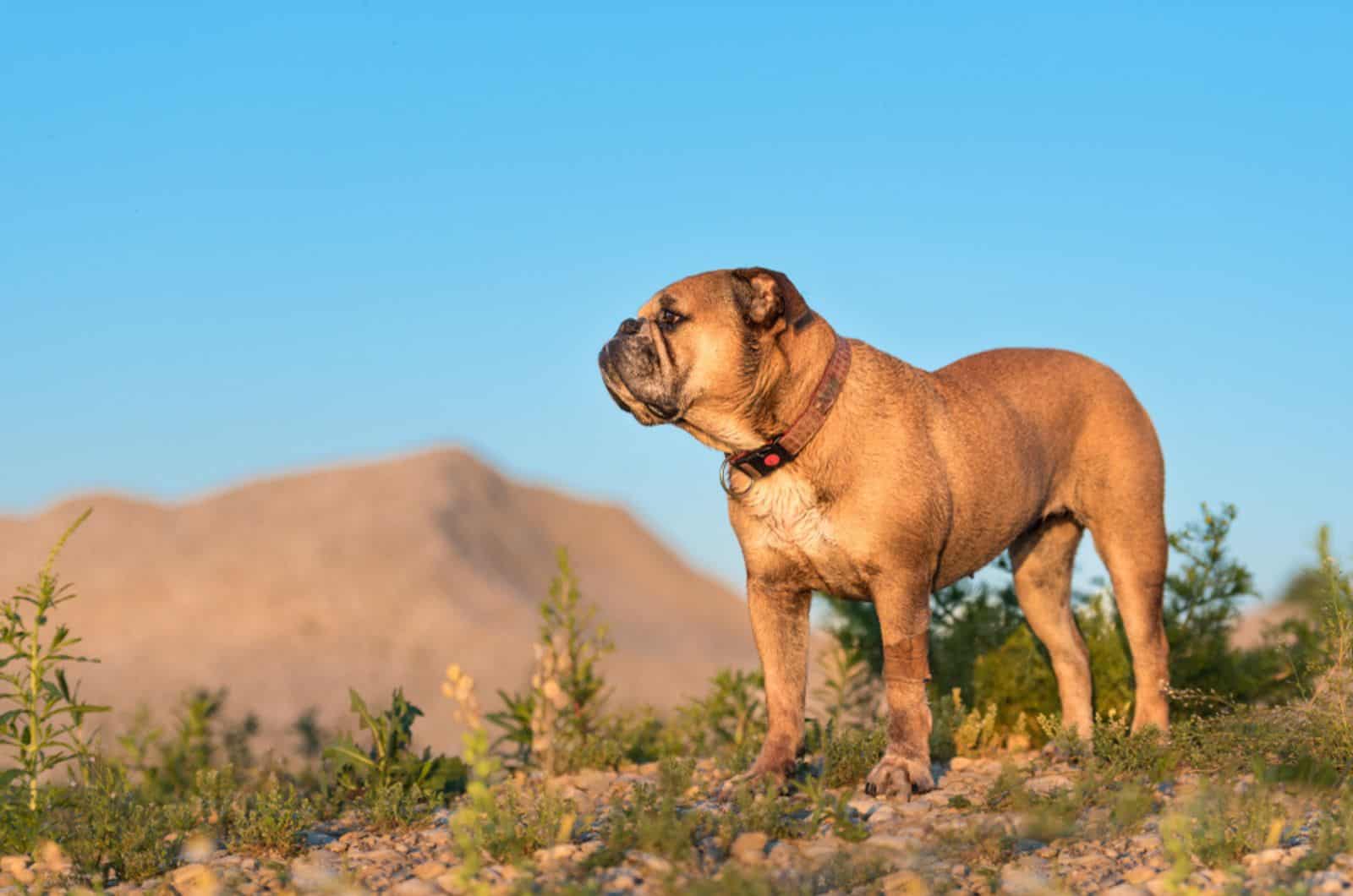
A relatively recent breed of bulldog developed in Switzerland in the middle of the 2000s is the Continental Bulldog, commonly referred to as the “Conti.”
Additionally, the Continental was created to reduce the number of health issues that these dogs faced, just like many contemporary Bulldogs.
The Continental was developed by renowned Swiss canine expert and breeder, Imelda Angehrn, widely known as the “Grand Old Lady of Bulldogs.” Throughout her entire life, her family raised English Bulldog puppies. She did wish to address some issues, though.
She desired a Bulldog that was not only more nimble, but also had less breathing issues, so she experimented with breeding numerous canines that were alike. She didn’t have any success with the cross between an Olde English Bulldogge and an English Bulldog, though, until 2001.
Continental Bulldog Personality Traits
Despite possessing a lot of self-confidence on the field, the Continental Bulldog is indeed a sociable and loving dog. These Bulldogs have a lot of vitality. They are therefore extremely active dogs that require continual exercise and mobility.
Continental bulldogs are incredibly skilled at reading people’s emotions because they pay such close attention to everything. They’ll be there for you while you’re struggling. They share your excitement, and they are joyful.
The disposition of the Continental Bulldog can be mild with the right socialization and training. It’s doubtful that they’ll develop excessive aggression or shyness. They can actually be considered the “Goldilocks of bulldog-type breeds.” They make terrific pets in every way.
10. Red-Tiger Bulldogs

In 1991, the Red Tiger Bulldog was created for the first time in America. Red-nosed American Bulldogs were crossed to produce this breed, which also possesses protective instincts and the ability to run well.
As a result, the variety of the Red-Tiger Bulldog has a distinctive hue. Several prestigious dog registry groups have recognized the Red-Tiger Bulldog breed despite its relative youth.
Their “mantle” coat typically features at least 70% colored fur and never more than 30% white fur. Being one of the Bulldog breeds having the greatest life expectancies, they typically reach weights of 75 to 110 pounds, and have a life span of up to 16 years.
It is recognized by the American Kennel Club, the Canine Bodybuilding Association, as well as the Red-Tiger Bulldog Registry and Archive despite not yet being an AKC (American Kennel Club) approved breed.
They have a typical short snout and wrinkly face.
Red-Tiger Bulldog’s Personality
Although the Red-Tiger Bulldog has always been devoted to its family, uninvited guests may not find this dog to be very hospitable.
With a nearly sculpted head that exudes grace, personality, and power, Red-Tiger Bulldogs are a striking breed. They are intelligent, self-assured dogs, but if they are not socialized and disciplined from a young age, they can become hostile toward humans and other animals.
Although they are kind to kids, it is advised that they start receiving proper training at a young age to make them more hospitable to visitors. Red-Tiger Bulldogs benefit most from a daily, lengthy walk, although they may live in an apartment or a house with a yard just as well.
If not given proper encouragement from a young age, they may grow up to be aggressive and dominating against unfamiliar canines and animals. They exhibit a powerful prey drive, and they have high energy levels.
To prevent the likelihood of conflict with unfamiliar canines and small vermin-like animals, early socialization as well as obedience training are advised. They get along nicely with pets, especially dogs. The Red-Tiger Bulldog requires a firm, dependable, and self-assured owner.
Although this breed is sharp and ready to please, it may also be obstinate and insist on playing during training sessions. Prior to proper training sessions, a little walk or game break usually burns enough energy to resolve this problem.
Preferred just as any bulldog breed, they are great family dogs, and this one, being a crossbreed of many Bulldogs, has a high life expectancy.
11. French Bulldog
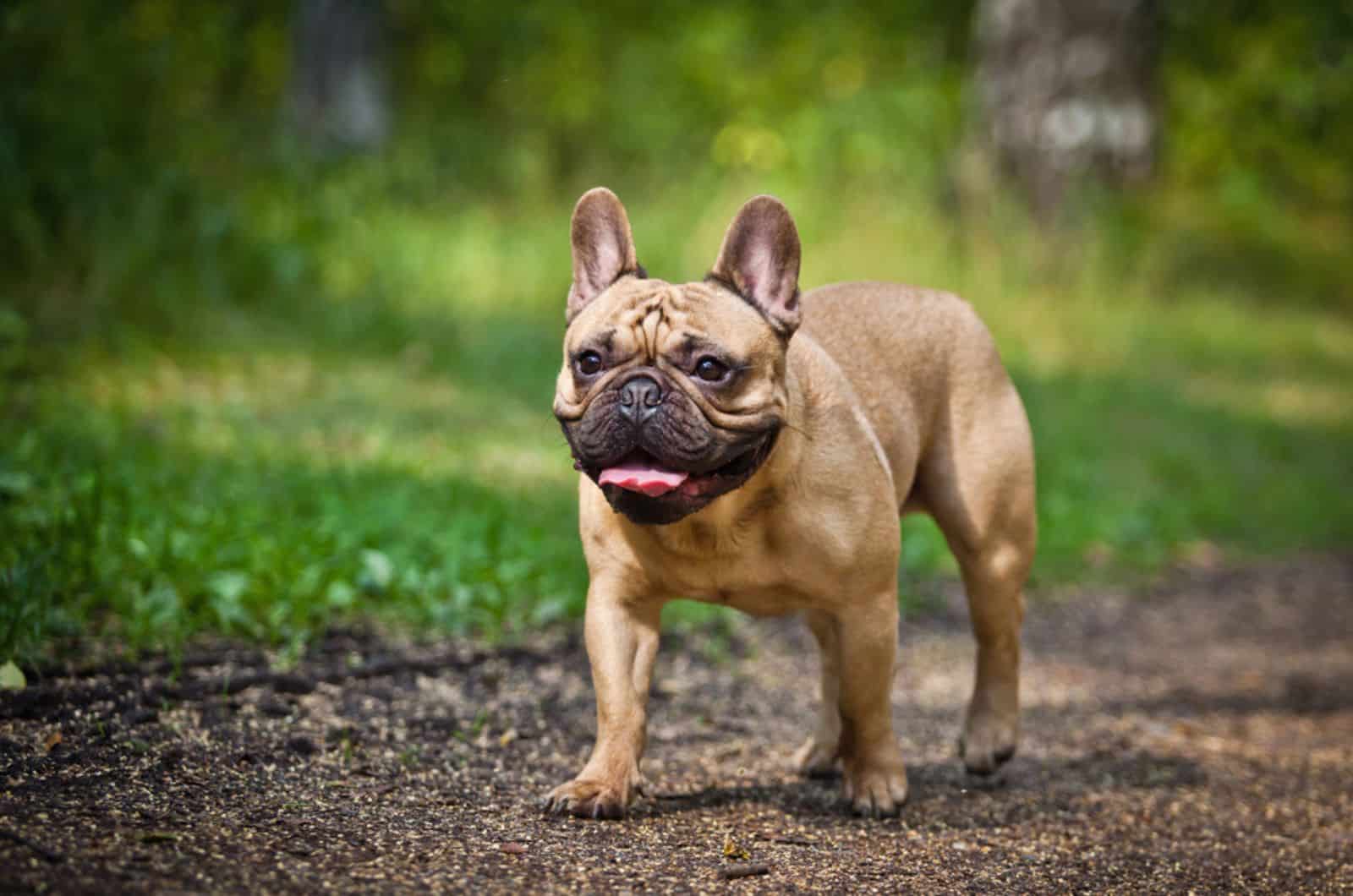
In the middle of the 19th century, the sociable and laid-back French Bulldog made its debut in Paris. Even though they go by that name, they actually have English roots, but France is where they first gained wide acceptance.
By breeding English Toy Bulldogs with indigenous Parisian ratters, this stocky, compact breed was created. The Toy Bulldogs arrived in Paris, thanks to lace workers from Nottingham.
Large bat ears and petite Bulldog features distinguish this one-of-a-kind French Bulldog. Its huge, squared-off skull is heavily wrinkled above its little snout. Its body is small and muscular behind its shiny, silky coat.
The French Bulldog puppy has historically evolved into the most popular bulldog-type breed, notwithstanding the greatness of American and English Bulldogs. These dogs, also referred to as “Frenchies,” were bred to be companions acceptable for most families by reducing their size.
Frenchies initially began to appear in England during the Industrial Revolution. They were miniature friends that could easily fit in the frequently cramped quarters of Nottingham, England’s lace producers.
However, a significant number of workers had to move when the center of the lace-making industry moved to northern France. They therefore traveled with their miniature Bulldog pals. Frenchies also became a major hit in the rural communities surrounding the lace industry.
The traditional Frenchies have been crossed with other well-liked toy dogs over the course of the following ten years to create the French Bulldog that we know today.
It is thought that they were bred with terriers like Pugs and other breeds, giving them their distinctive ears that resemble bats.
Personality Traits Of The Frenchie
The French Bulldog doesn’t bark a lot, but they are playful, watchful, and flexible. They make great watchdogs, though. French Bulldogs are ideal for singles, young families, and indeed children as they don’t need a lot of outside activity.
The most popular breed of Bulldog is the French Bulldog, and for good reason. Frenchies have conquered millions of households all over the world, thanks to their fun, yet upbeat personalities. Few dog breeds are as vivacious and upbeat as them.
Given their experience as friends in a variety of settings, Frenchies are among the breeds of dogs that are most adaptable. They were created for compact structures like apartments and tiny houses. They will, however, also flourish in suburban and rural locations.
Frenchies make the best lap dogs as well as buddies. Even while they enjoy playing and running around, these dogs also don’t mind being lazy couch potatoes. They will be delighted to join you for some fun, whatever you’re up for.
12. Bullmastiff
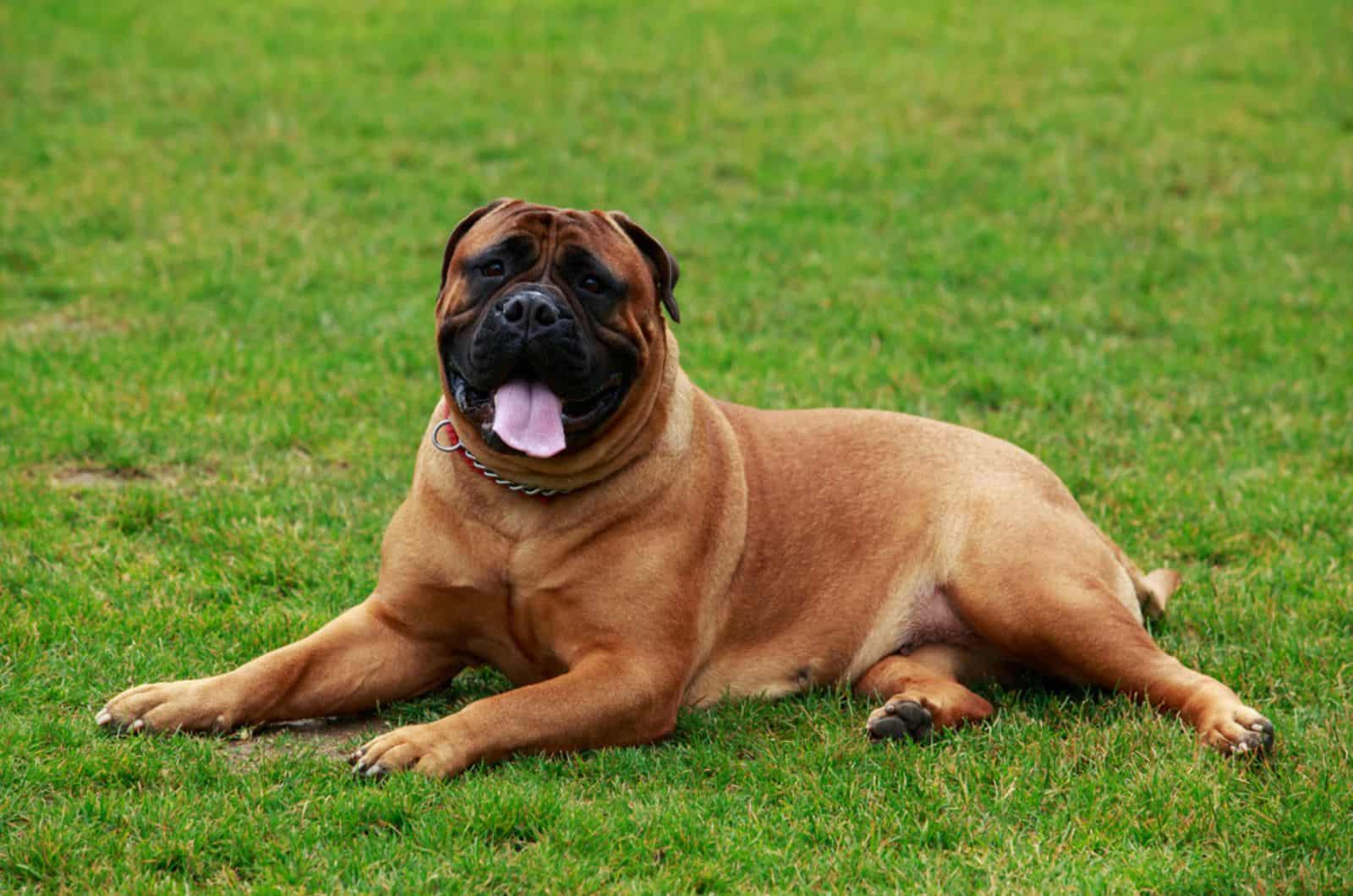
The Bullmastiff resembles a Bulldog, which is not surprising. In fact, their names express this clearly. They are a hybrid of the vanished Olde English Bulldogge and the English Mastiff. The best part is that they’ve managed to keep all of their parents’ best traits.
Due to their prior employment, these dogs were given the nickname, “The Gamekeeper’s Night Dog.”
The English aristocracy owned a lot of game preserves in the 19th century, which were vast tracts of land with game that allowed hunters to safely pursue their sport in a “managed” setting.
This indicated that poachers had a high priority for these game preserves. Therefore, the nobility required a canine guardian that would tenaciously keep intruders away from their land. In other words, Bullmastiffs accomplished just that. They were obviously very good at what they did.
Bullmastiff Personality Traits
Only a few dogs are as fearless and devoted as the Bullmastiff. They aren’t typical Bulldogs; instead, they are a breed of Bulldog created specifically for guarding. They are adept at hunting and locating intruders, thanks to their physical strength. Few also dare to tamper with one.
When it comes to family relations, Bullmastiffs are kind and loving. They are suitable canines for households with children, and they are often well-behaved due to their pretty calm and laid-back personalities.
When a stranger is around, the Bullmastiff’s relaxed demeanor among family members is probably going to alter. These dogs have a propensity to be quite wary of strangers.
The Bullmastiff is definitely not a coward despite his devotion to his family. He has a tendency to think independently, which could make instruction difficult.
He might also be less understanding of a family’s animal members. So, if you’re considering getting a Bullmastiff for your family, exercise caution.
Bullmastiffs are consistently composed and assured, but their dependability is what matters most. There is no need to explore any further if you need a trustworthy security dog. Bullmastiffs, however, have powerful personalities, so they work best with seasoned owners.
They are gentle and kind in the home. In fact, a lot of owners will refer to them as reserved. They possess the intelligence to understand when to be energizing and when to settle down.
After all… in order to serve as effective guardians, these canines are required to comprehend conditions.
13. Serrano Bulldog
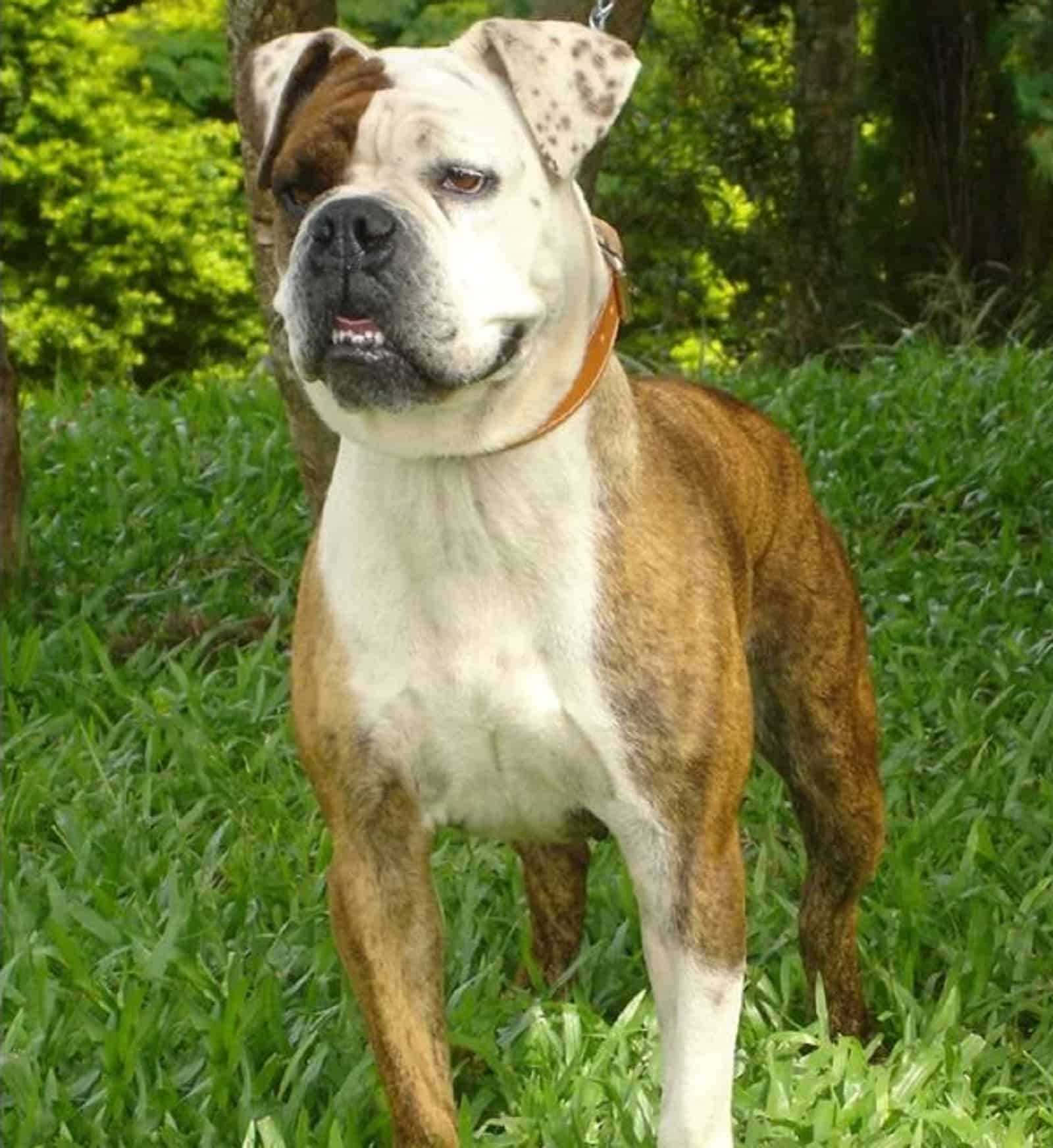
Beautiful Brazilian dog breeds like the Serrano Bulldog were created for hard labor. They make fantastic security dogs, and are also fantastic at moving cattle, also known as herding. Their past and origin tale, however, are hazy.
According to historians, canines that immigrants carried to the southern region of Brazil throughout the 1800s were the ancestors of the Serrano.
Due to the fact that the majority of immigrants at the time were from Europe, they managed to bring their Bulldogs, which were popular during the time.
Although the specific canine breeds that went into the formation of the Serrano are unknown, it is believed that the Bullenbeisser as well as the Olde English Bulldogge were involved. In fact, some think that Alano Espanol played a part.
Serrano Bulldog’s Personality Traits
Although there isn’t much information available, we think the Serrano Bulldog has normal bulldog-like temperaments. The Serrano is a bold and self-assured breed of bulldog that is ideal for security duty.
They’ll probably be nice and quiet dogs, at least around known individuals. And, unlike many intelligent guard dogs, they won’t act aggressively without a reason. They will only respond violently if they are aroused or feel disturbed.
However, the Serrano Bulldog’s strong loyalty is well known. When trained properly, they will always obey their owner. They are also suitable for almost any canine task, particularly ones involving cattle, because of their strong work ethics.
14. Valley Bulldog
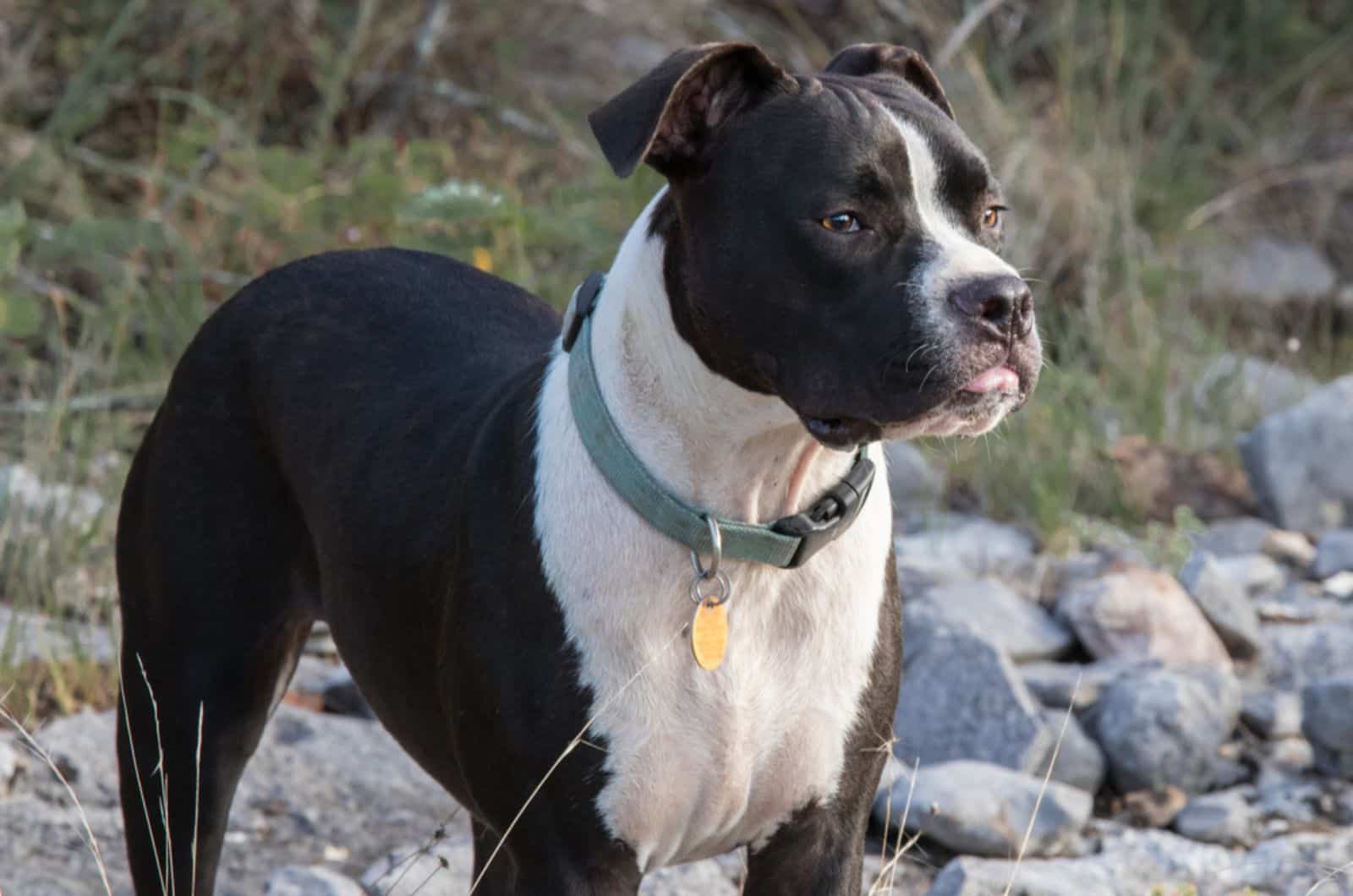
The Valley Bulldog is practically a bully cross. They are specifically a hybrid between the Boxer and the English Bulldog. They were previously known as the Valley Bulldog, but they were renamed as a result of their recent surge in popularity.
Some people think that Valley Bulldogs already existed before intentional crossbreeding for the purpose of creating designer dogs. Nevertheless, because there is a desire for the amiable, but well-behaved companion, breeders have begun purposefully breeding these bulldogs.
The mid-1900s saw an initial rise in popularity of these magnificent bulldogs in Nova Scotia, Canada. Their positive personality helped them immediately break out onto the world stage. Despite being wonderful canines, a lot of them nonetheless wind up in shelters.
Valley Bulldog’s Personality Traits
The Boxer parent breed imparts its playful dispositions to the Valley Bulldog. In fact, many owners will admit that their pets are stupid and humorous. They have an infectious sense of joy, and they can instantly make your day happier.
Due mostly to the Boxer parentage, Valley Bulldogs are much more energetic than your ordinary English Bulldog. However, they will require exercise and socializing similar to any other bulldog in order to maintain a calm disposition; nonetheless, they are generally laid-back dogs.
Always lively and inquisitive, they will enjoy playing with their owner. Making the Valley Bulldog the focus of attention is perfect because they are inherently lovable. These canines enjoy interacting with people, as seen by their outgoing demeanor.
15. Campeiro Bulldog
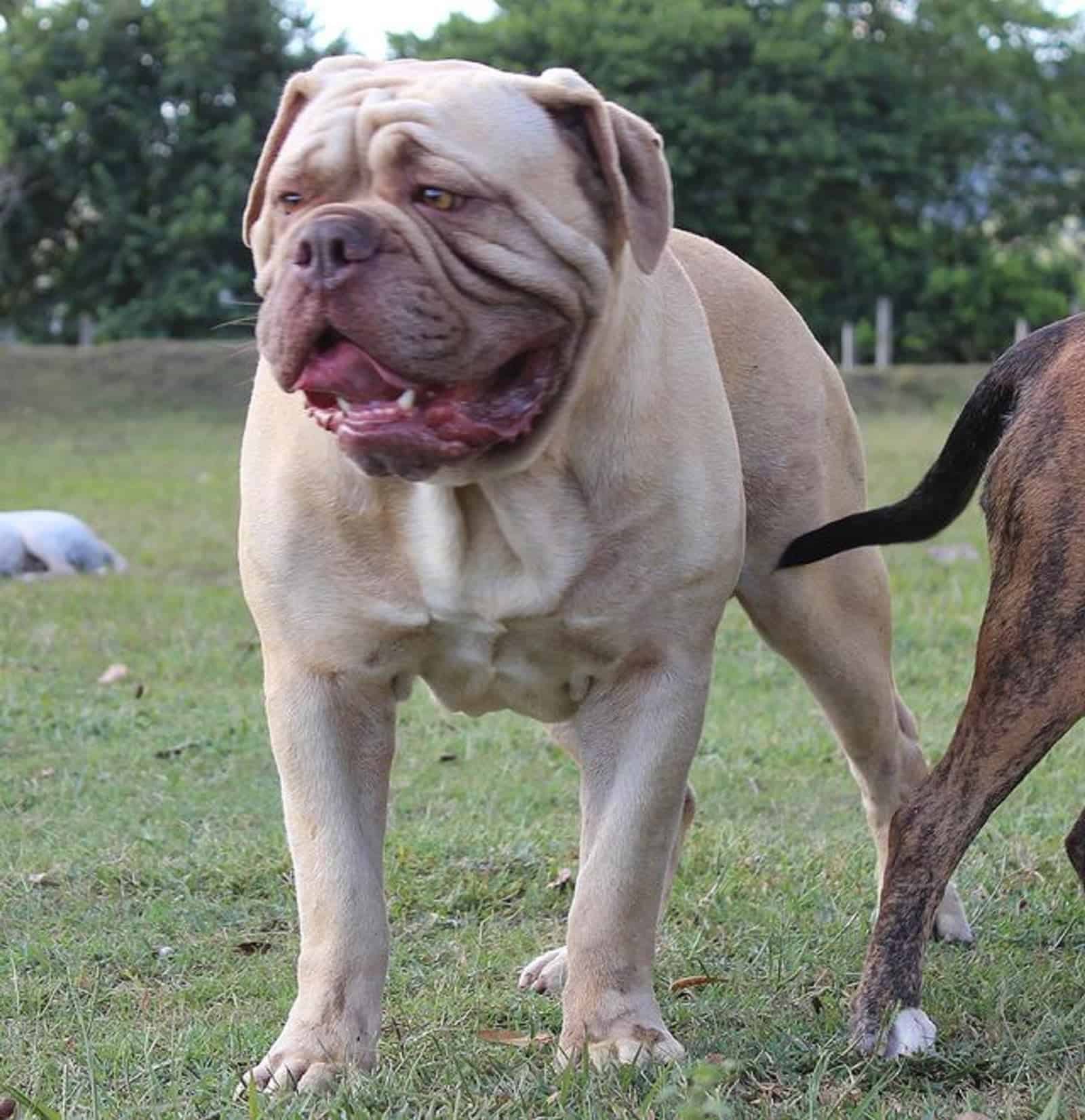
Another breed similar to the Brazilian bulldog that is frequently mistaken for the Serrano Bulldog is indeed the Campeiro Bulldog. Despite the fact that they are closely related, the two Bulldogs are of an entirely different breed, although they share the same ancestor.
They do, however, have a more cloudy past than the Serranos. The majority of historians thought that the ancient Olde English Bulldogges were ancestors of the Campiero Bulldogs. They might have mated with neighborhood dogs when the immigrants introduced them to Brazil.
Another hypothesis holds that Terceira Mastiffs, a landrace dog, evolved into Campiero Bulldogs. However, nobody is sure. Nevertheless, Campieros became quite popular in Brazil as cattle and guard dogs.
Campeiro Bulldog Personality Traits
The Campiero Bulldogs seem to be the epitome of fervor and fidelity. They won’t ever change. They are actually willing to put in a lot of effort because of their proprietors. They take great delight in being a part of your family, and they will always support you.
Campiero Bulldogs, however, are excellent security dogs. Not only do they have the skills necessary for it, but they also wish to protect their pack. They possess all the best characteristics of guardians: they are alert, wise, and vigilant.
They naturally get along well with kids. They are utterly enamored with the havoc that children bring to the team. Nevertheless, you should monitor interactions and appropriately socialize them. Some owners claim that they are protective, and can easily become jealous.
16. Bordeaux Bulldog
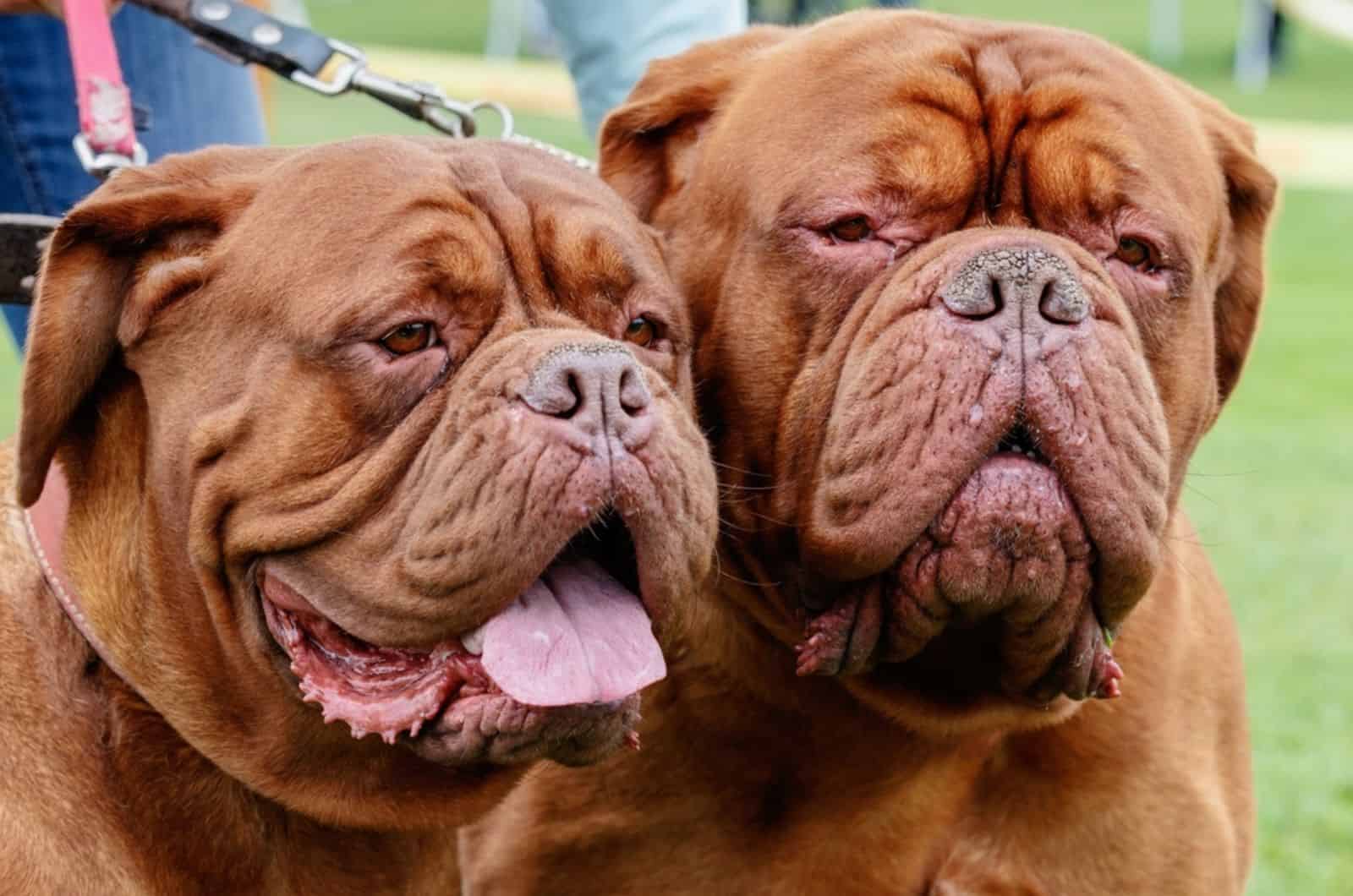
The Dogue de Bordeaux, another name for the Bordeaux Bulldog, has a long and distinguished history. According to one idea, the Dogue is an ancient French breed that originated in the region.
According to other claims, the Italian, Greek, as well as Tibetan Mastiff (known as the most expensive dog breed) seem to be the Bordeaux Bulldog’s ancestors.
For many years, combat dogs of the breed, known as the Bordeaux Bulldog, were widely utilized. The large estate of the nobility became home to guard dogs after they outlived their purpose.
The Bordeaux Bulldog was the last breed to be employed as a guard dog during the French Revolution. However, this breed of dog survived the carnage and began working as livestock herders.
Bordeaux Bulldog’s Personality
Today’s Bordeaux Bulldog is a short, stocky mastiff, with a prominent stop, a large, wrinkled short muzzle, and a large head. The epidermis on the neck is thick and floppy, and the nose is big, with wide nostrils. However, they usually don’t have breathing problems.
Their chest is large and deep, their legs are strong, and they have small ears. The Bordeaux Bulldog is a very devoted, tolerant, docile, and faithful guard dog. It is, nevertheless, fearless and aggressive against strangers.
They have a gentle spot for children and their family, and they would protect them with their own life.
17. The Ca De Bou
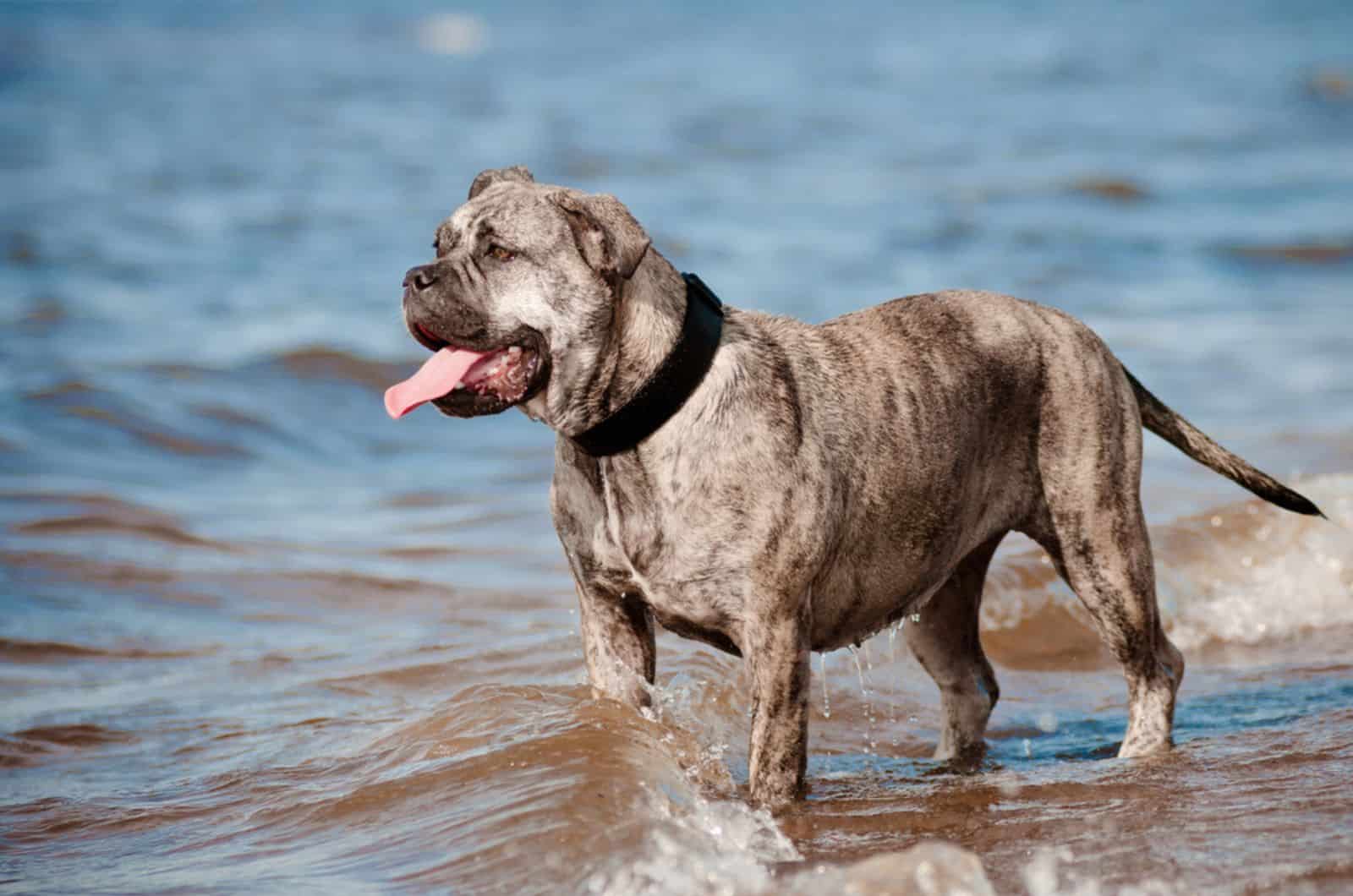
The Ca de Bou is indeed a bulldog-like breed that originated on Majorca… an island of the eastern coastline of Spain. They are enormous, muscular Bulldogs that have been selectively bred for protecting and bull-baiting, just like their close cousins.
The current Ca de Bou is predominantly a household pet, and it frequently serves as a household guard dog. However, these canines had a difficult background. The forebears of these canines, according to historians, were in danger of going extinct following World War II.
There were actually not many Bulldogs remaining on the island. They were eventually crossed with other Spanish bullies, like the Perro de Pastor Mallorquin, and the Alano Espanol, to produce the modern Ca de Bou – a top working dog.
Personality Traits Of The Ca De Bou
Despite their intelligence, the Ca de Bou requires a firm and reliable owner to control their domineering personality. With the Ca de Bou, socializing and obedience training are crucial. They could be very challenging to manage without it.
Nevertheless, they are normally quiet and comfortable dogs in the home if you have introduced adequate obedience training. They are actually some of the most silent canines you will ever meet. They are therefore excellent watchdogs and protectors.
The Ca de Bou doesn’t have a great deal of faith in newcomers. The best guardians constantly seek advice from their charges, and so will these.
Final Word
Here, we have a variety of Bulldog breeds; however, they all share the same distinctive muscular frame, pushed-in nose, tiny ears, and rolling pace.
They have a short, silky coat that is available in many different hues. While some varieties can even be categorized as huge dogs, some breeds are more closely related to little dogs.
Bulldogs adore cuddling with you, but they are not exclusively couch potatoes; they also appreciate light activity. However, many people can live contentedly in an apartment in a city or in a house in the country with a back yard.
It’s crucial that you provide these puppies with the time and care they require so that they can be fed a healthy diet and be properly trained from an early age. As their short snout tends to make breathing difficult, they must reside in air-conditioned spaces.
Bulldogs are a well-liked breed among American families, but you should do your research before getting one because these puppies are unluckily more likely to experience respiratory, neurological, and skin problems.
